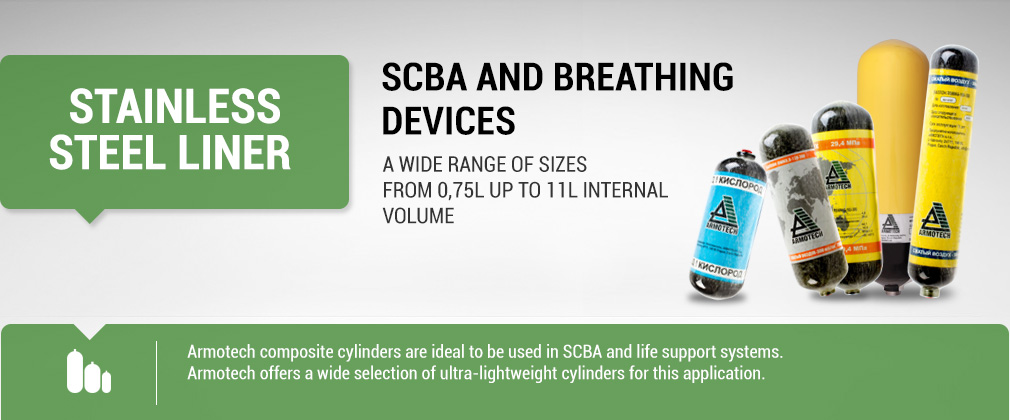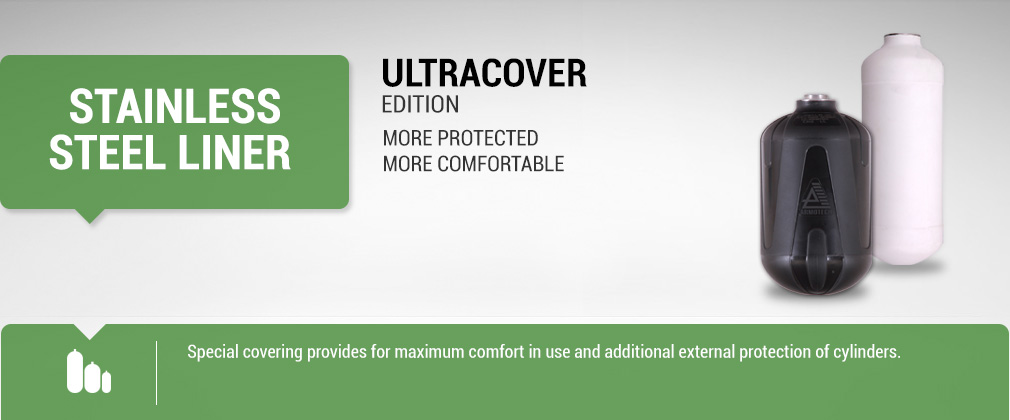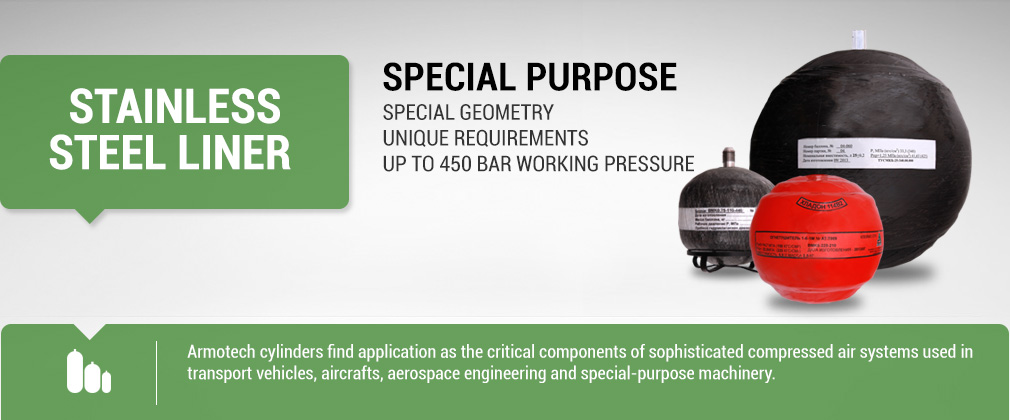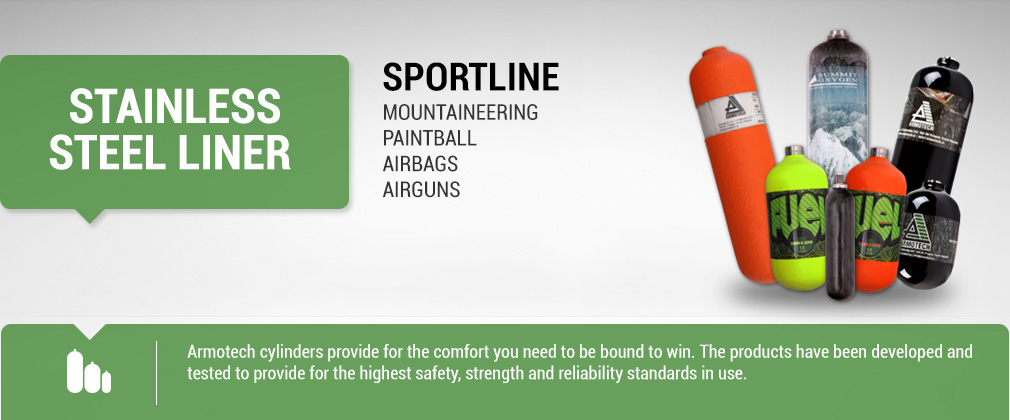Safety
Typical design features
Design concept
The concept used for cylinders designing comprises a set of engineering design principles, in particular:
- acceptably low probability of structural breakup without previous leakage
- predictable resistance of liner structure material to cracking
- feedback providing for termination of the product use in case of through thickness crack leakage
Basic design arrangement
The cylinder basic design arrangement comprises a welded thin liner made of yielding stainless steel and composite overwrapping which covers the whole surface of the liner. Use of corrosion-resistant stainless steel types 304, 304L 316, 316L and so on permits the use of cylinders to store and transport all types of gases and media as per ADR/RID classification.
Standart types of product testing:
Standard tests include:
- Limit-load test to evaluate true margins of safety
- Cyclic loading test (at test pressure Ph) to evaluate the period of safe operation.
- Cyclic temperatures test (-60 to +70°C) to evaluate safe operating temperature range.
- Long term sustained load tests (at internal test pressure Ph) at maximum temperature (+80°C).
- Drop test in working conditions from different heights in several versions.
- Test of composite overwrap surface local damage impact on safe operation of the device.
- High-speed impact test with a given energy (gunfire test).
- Test of the cylinder behaviour under fire loading.
- Cyclic pneumatic pressure loading test to evaluate the maximum (minimum) filling levels.
- Permeation test to determine leak tolerance of the gases stored.
- Test of environment impact on safety operation in a specified time interval.






